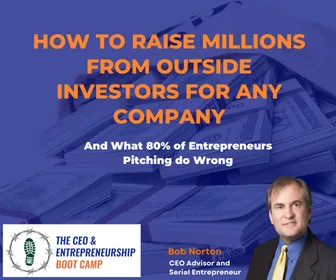Top Ten Rules For Start-Up Success
In my experience, there is a significant knowledge gap when it comes to understanding the unique management requirements of a startup compared to established companies. Startups operate under different conditions where decisions must be made quickly, risks are higher, and solutions are often incomplete and narrowly focused (around 80% completion or less). During the dot-com bubble, many startups hired executives from big corporations who had little more than an idea and a large venture capital investment. However, it became evident later on that running a startup is a completely different ballgame than managing a larger company. Most of these executives, despite their impressive credentials, struggled to adapt to the fast-paced and resource-constrained environment of a startup.
When launching a new product or entering a new market, there are numerous unknowns that require a continuous process of iteration and adaptation. It’s impossible to have all the answers upfront, and it’s highly likely that multiple changes will be necessary along the way. This process involves trial and error, reducing risk, and relying on real customer feedback and market data. In the technology sector, this is often achieved through alpha or beta testing, which serves a purpose beyond debugging. The sooner a startup reaches this stage, the less resources will be wasted. Successful entrepreneurs demonstrate flexibility and the ability to pivot rapidly while staying true to their core principles and value proposition for customers.
“Success is not the key to happiness. Happiness is the key to success. If you love what you are doing, you will be successful.” – Albert Schweitzer
A startup needs to be designed, launched, and then constantly modified based on high-quality feedback from customers, ideally through face-to-face interviews. It’s akin to a heat-seeking missile constantly adjusting its course based on the latest radar data. Unlike larger companies, startups must embrace this iterative approach to leverage their main advantage over competitors with more substantial resources.
“Good business leaders create a vision, articulate the vision, passionately own the vision, and relentlessly drive it to completion.” – Jack Welch
1. Time is your enemy once you start burning through cash until you achieve profitability. Set fixed schedules for product development to minimize risks and avoid running out of resources. If the SR-71, a complex aircraft, could be designed and launched in 18 months, your project should be able to achieve similar timelines. Replace team members who don’t believe in the feasibility of developing a product within 12-18 months, with most projects aiming for completion within six months after assembling the team.
2. Embrace constant small course corrections on a daily, weekly, and monthly basis. Iteratively work towards the best solution that addresses customer needs until you find a product or service they can’t live without, differentiating it from existing offerings. This necessitates consistently sharing your progress and ideas with potential customers, even though many entrepreneurs are hesitant due to confidentiality concerns. Protect your interests with confidentiality agreements (NDAs) while exchanging feedback. A startup is akin to a heat-seeking missile that requires continuous course adjustments.
“The biggest risk is not taking any risk… In a world that is changing really quickly, the only strategy that is guaranteed to fail is not taking risks.” – Mark Zuckerberg
3. Be willing to take calculated risks and actively manage them by closely tracking their progress. Maintain a list of major risks and assign specific individuals to oversee each key risk, ensuring ongoing evaluation and management.
4. Maintain flexibility and avoid investing time and money in rapidly changing elements. Focus on building long-term value by investing in core aspects that are sustainable and applicable to multiple customers, rather than accommodating specific feature requests from individual customers. Many companies waste resources on short-term solutions that won’t last. If a customer requests a special feature, explain that it falls outside the standard product and would require additional investment, charging a significant margin. Only proceed if the funds obtained can be utilized for other features. Most customers will back off, and if not, you’ll gain valuable insights into market needs while getting paid for the customized work.
5. Leverage existing knowledge, resources, and lessons learned that are directly relevant to your business. Avoid reinventing the wheel, as customers aren’t willing to pay for duplicated efforts. Seek advice from failed ventures in similar market positions to learn from their mistakes and save yourself from potential costly errors.
“Innovation distinguishes between a leader and a follower.” – Steve Jobs
6. In a startup, employees must have broader responsibilities compared to larger companies. Every employee should contribute work that generates tangible results on a daily basis. Apart from the CEO, who is responsible for managerial tasks, startup team members should be engaged in multiple roles. The organization should maintain a flat structure that encourages open communication and collaboration among all employees. As Jack Welch said, create a “boundaryless” environment.
7. Recruit the best people at every level as early as possible, and never settle for average employees. Average performers can hinder a startup’s progress before it even takes off.
“The best executive is the one who has sense enough to pick good men to do what he wants to be done, and self-restraint enough to keep from meddling with them while they do it.” – Theodore Roosevelt
8. Regardless of available funding, bootstrap your startup. This approach not only conserves cash, but also forces you to optimize your business model for maximum efficiency and results. It compels you to focus on the ultimate proof of a business’s viability: customers’ willingness to pay a price that generates profits. Avoid falling into the trap of relying on vanity metrics like website traffic or user registrations, as they don’t guarantee a sustainable business. The only true proof is cash paid by customers, exceeding costs by a reasonable margin—a concept known as “traction” in the eyes of venture capitalists.

Free Webinar Replay
How to Raise Millions from Outside Investors for any Company – Learn the 30 other sources of capital beyond angel and VC and how to prepare a company and get it into the top few percent investors see.
9. Develop a comprehensive business plan and vision. Even if you don’t need them for fundraising purposes and discard them later, these documents will save you considerable time and money. A well-crafted business plan should be regularly updated, guiding you to:
a. Identify and narrow down your target market by creating a specific list of potential customers or applying specific filter criteria.
b. Differentiate your product or service from larger competitors, providing a unique selling proposition (USP) that is significantly better, faster, and/or cheaper for the target customer segment.
c. Gain a thorough understanding of your market and competitors through continuous competitive intelligence and market research.
d. Understand the financial dynamics of your business and determine the necessary investments in each department or area to achieve success. Run scenarios based on different pricing, sales ramps, and variables to assess your financial flexibility.
e. Incorporate sustainable competitive advantages (SCA) into your business model. Outline strategies for maintaining a competitive edge over time, enabling premium pricing and protecting margins while fueling growth. Constant innovation is a key SCA, fostering a culture of continuous improvement.
f. Facilitate collaborative management techniques for annual strategic planning when you have a senior team. Align all management members on resource allocation, interdependencies, financial constraints, and individual department goals.
“The secret of change is to focus all of your energy, not on fighting the old, but on building the new.” – Socrates
10. Never give up. Continuously learn, adapt, and be willing to pivot. There are always options if you anticipate challenges and make course corrections in advance.
Regularly reviewing these ten rules will significantly enhance your chances of success. Seek assistance in transitioning your company’s management style to align with the unique requirements of a startup. It is recommended to have at least 50% of senior executives with prior startup experience, and the CEO should ideally have startup experience as well. Operating a startup differs greatly from managing medium and large organizations, and even talented executives from larger companies can struggle in this environment.
“The greatest leader is not necessarily the one who does the greatest things. He is the one that gets the people to do the greatest things.” – Ronald Reagan
For further insights into how managers must adjust their style for different stages of company development, I recommend reading my article “Modes of Management.” To increase your odds of launching a successful startup or new product, consider attending The CEO & Entrepreneur Boot Camp, which provides roadmaps, checklists, best practices, and models for effectively managing various aspects of a business.
Bob Norton is a long-time Serial Entrepreneur, CEO and investor who founded six companies with four exits that returned over $1 billion to investors for a 25X ROI. Two others are still in development. He has trained, consulted and advised thousands of Entrepreneurs, CEOs and boards since 2002. Mr. Norton works with companies to 2X to 10X growth rates and valuation using AirTight Management™, the world’s most comprehensive Leadership Operating System. He also helps companies raise capital to fund growth. He is also the Founder of The CEO Boot Camp™ and Entrepreneurship University™ for early-stage companies that have not reached product-market fit and $1M ARR.
What can we help you with today? Scaling, training, consulting, coaching?
Call (619) SCALE06 or (619) 722-5306 9am-6pm CT
Or Schedule a free 30-minute strategy session by clicking here.



